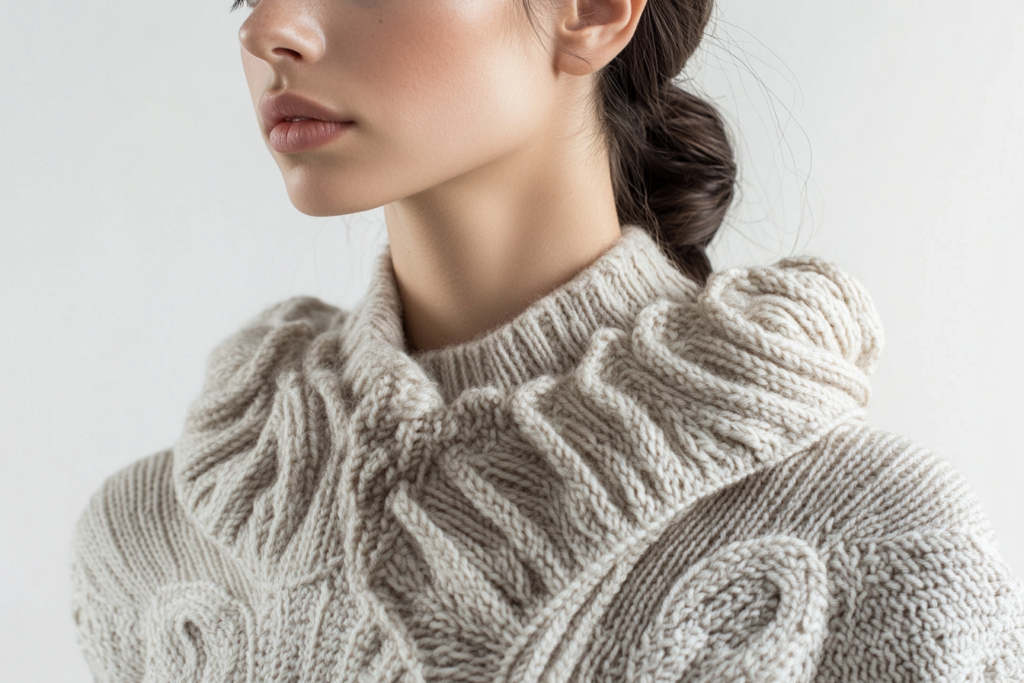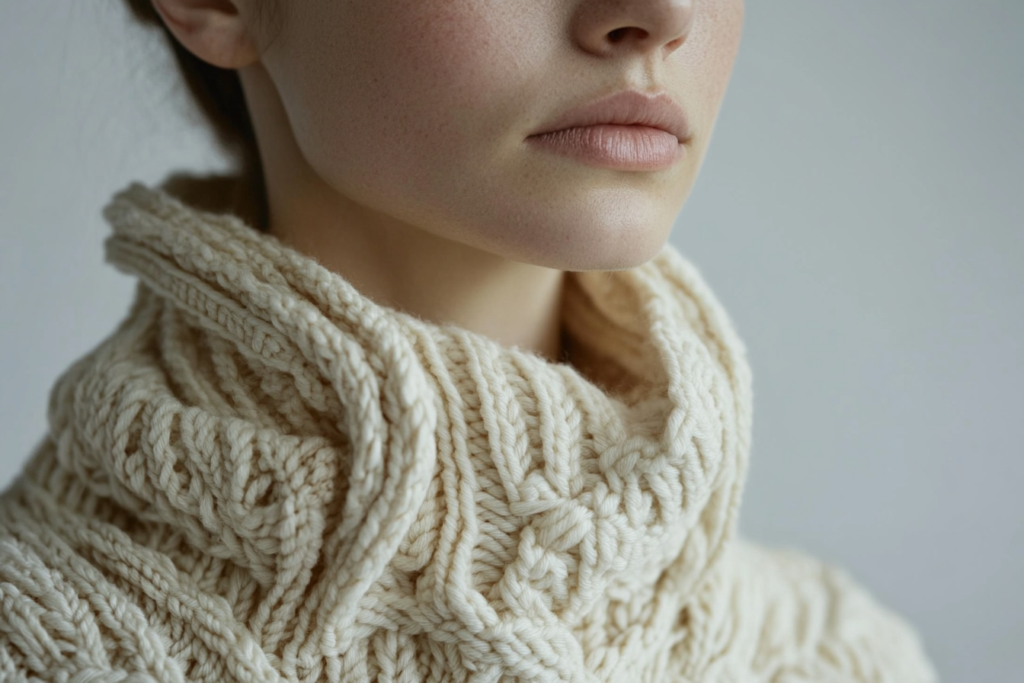Full-Fashioning: Revolutionizing Knitwear with 3D Knitting Technology
Meta Description: Full-fashioning is a knitting technique that creates a whole product in three dimensions at once, providing a seamless, form-fitting finish for garments.
What is Full-Fashioning?
Full-fashioning is an innovative knitting technique used to create garments in three dimensions all at once. Unlike traditional knitting methods, which involve constructing flat pieces of fabric that are later sewn together, full-fashioning enables the creation of a finished product directly on the knitting machine. This results in a more precise fit, seamless design, and often a more cost-effective production process.
Full-fashioning is typically used in the production of knitted sweaters, cardigans, and garments made of yarn. It allows for the shaping of sleeves, armholes, and necklines without the need for additional sewing, creating cleaner, more structured seams and reducing the amount of fabric waste.


How Does Full-Fashioning Work?
The process of full-fashioning involves knitting fabric directly into its intended shape rather than knitting flat panels and then sewing them together. Shaped areas like the neckline, armholes, and bust are knitted with gradual reductions or increases in stitch patterns, creating a form-fitting and perfectly tailored garment. Here’s how it works:
- Shaped Knitting: The yarn is manipulated during the knitting process to create specific areas of shaping. These areas might be increased or decreased to form the contours of the body.
- No Seams: The fabric is knitted seamlessly, eliminating the need for traditional seams or additional sewing. This makes the garment smoother and more comfortable to wear.
- Three-Dimensional Design: Full-fashioning allows for garments to be knitted in their 3D shape, which includes details such as armholes, necklines, and even finished edges. This reduces the need for post-production alterations.
- Automatic Shaping: The machine automatically adjusts the number of stitches per row, creating a custom-fit pattern without the need for manual intervention. This makes the production process faster and more precise.
The Advantages of Full-Fashioning
1. Improved Fit
One of the biggest benefits of full-fashioning is the improved fit of garments. By knitting directly to the required shape, the garment will naturally follow the curves and structure of the body. The result is a more comfortable and form-fitting product that is closer to the body’s shape than one made with sewn-together flat pieces.
2. Reduced Waste
Full-fashioning also reduces fabric waste, as the process involves knitting only the exact amount of fabric needed to create the finished garment. Traditional methods often produce more waste due to cutting, trimming, and sewing.
3. Faster Production
The full-fashioning technique allows for quicker production times. By eliminating the need for cutting, sewing, and finishing, manufacturers can produce garments in less time. This efficiency is particularly important for high-volume production.
4. Seamless Design
Full-fashioned garments have smooth, clean lines and fewer visible seams. This creates a sleek and polished look that is often more comfortable to wear, especially for garments like sweaters and tops.
5. Quality and Durability
Because full-fashioned garments are knitted to fit, they are often more durable and retain their shape better over time. With fewer seams, there are fewer points where the fabric can stretch, tear, or lose its structure.
Full-Fashioning in Modern Fashion
Full-fashioning has become a key technique in the production of high-end and performance-driven knitwear. It is widely used in both fashion design and technical applications, allowing designers to create garments that fit better and are more aesthetically appealing.
1. High-End Knitwear
Fashion designers often use full-fashioning for high-end, luxury knitwear because it allows for precise detailing and customized fits. Full-fashioned garments can be made with high-quality yarns like cashmere, merino wool, and silk, resulting in an elegant, comfortable product.
2. Performance and Activewear
In sportswear and activewear, full-fashioning plays a crucial role in providing garments that are ergonomically designed for the body’s movements. The shaping offered by full-fashioning enhances mobility, and the seamless design reduces friction against the skin, improving comfort during physical activity.
3. Ready-to-Wear Fashion
As full-fashioning technology becomes more accessible, its use has expanded into ready-to-wear collections, where designers use it to create garments with a tailored fit and fashion-forward designs. This technique has become an essential part of the knitwear industry, especially in sweaters and cardigans.
Full-Fashioning vs. Traditional Knitting
| Full-Fashioning | Traditional Knitting |
|---|---|
| Garment is knitted directly into its shape, including sleeves, armholes, and necklines. | Fabric is knitted flat and later sewn together to form the garment. |
| Reduces fabric waste by knitting only the necessary amount of material. | Waste occurs from cutting fabric and sewing pieces together. |
| Allows for more detailed, form-fitting garments with a smooth, seamless finish. | Seams can create discomfort and may affect the garment’s fit. |
| Ideal for high-quality and luxury knitwear. | Suitable for mass-market garments but may require additional finishing steps. |
| Faster production due to fewer steps in manufacturing. | Takes longer due to the need for cutting, sewing, and finishing. |
Applications of Full-Fashioning
Full-fashioning is widely applied in fashion, sportswear, and technical garments. Below are the most common applications:
- Sweaters and Cardigans: Full-fashioning allows for perfectly shaped necklines, sleeves, and armholes without bulky seams. This technique is ideal for knitted sweaters that require a custom, form-fitting look.
- Tops and Dresses: Full-fashioning is used to create body-hugging tops and dresses, offering a tailored, sleek look that is both stylish and comfortable.
- Sportswear: Activewear that needs to move with the body, such as performance leggings and sports bras, benefits from full-fashioning’s ability to create garments that are perfectly shaped and free of seams that could cause irritation.
Conclusion: The Future of Full-Fashioning
Full-fashioning is revolutionizing the knitting industry by combining precision, comfort, and speed. As the technology behind full-fashioning continues to advance, we can expect even more innovative applications in various sectors of the fashion industry. From luxury knitwear to high-performance sportswear, the future of full-fashioning is poised to shape how we design and produce garments.



